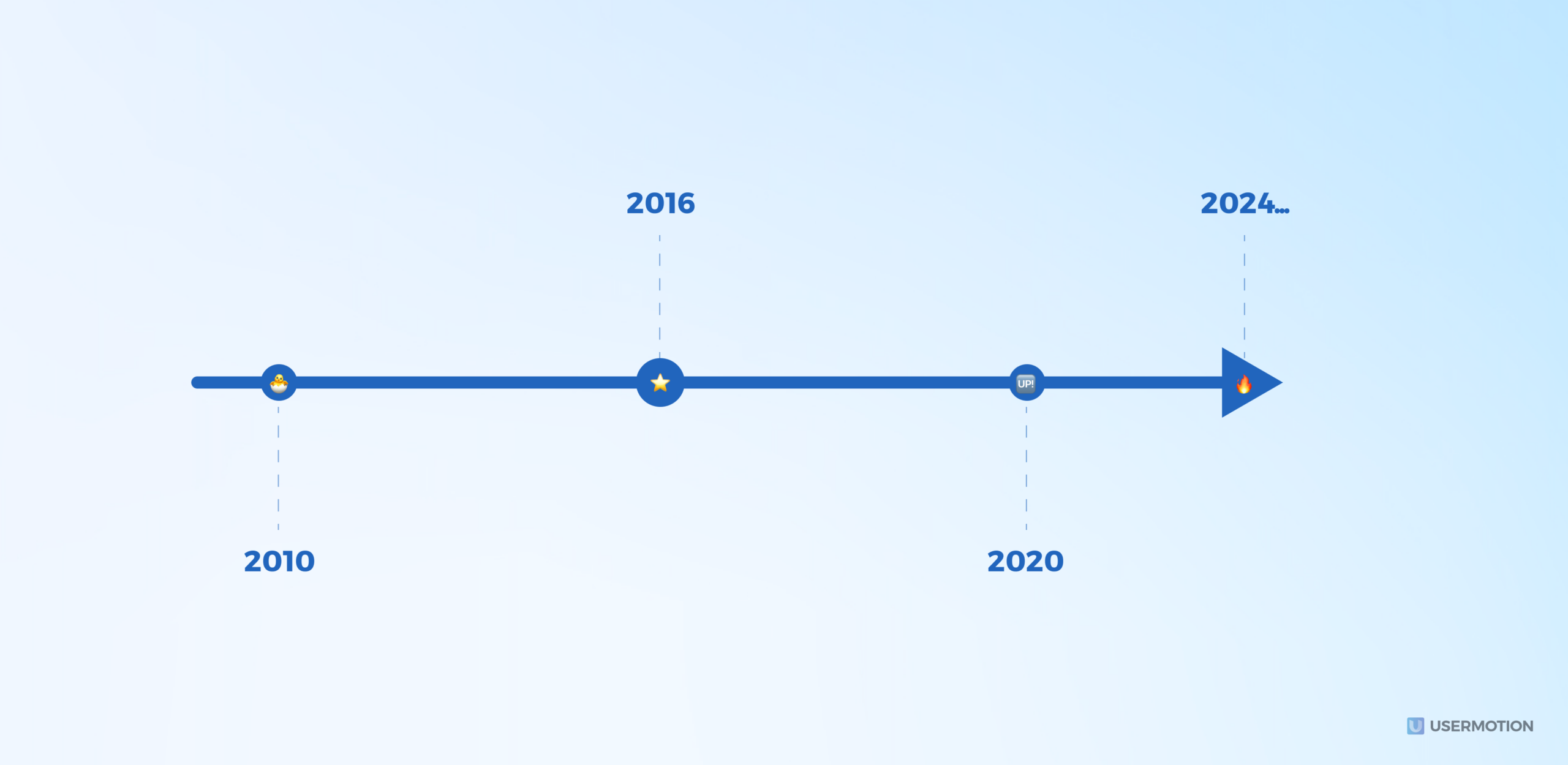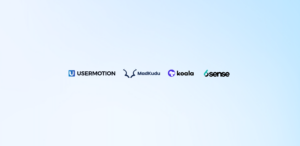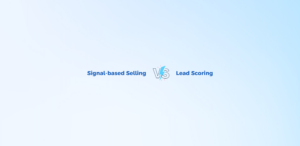It’s almost 2024, and this is when we all look back at what we’ve achieved, and what we’ve passed through. We have the passion more than ever to create new strategies for the new year to go from our current position to the beyond.
I won’t keep that part too long, or won’t mention all those popular sayings about being product-led in SaaS. Yes, it is true that, by their nature, all SaaS products are somewhat product-led. But, regarding how product-led is the future, it requires going beyond what is natural to your current approach.
The change in B2B SaaS growth
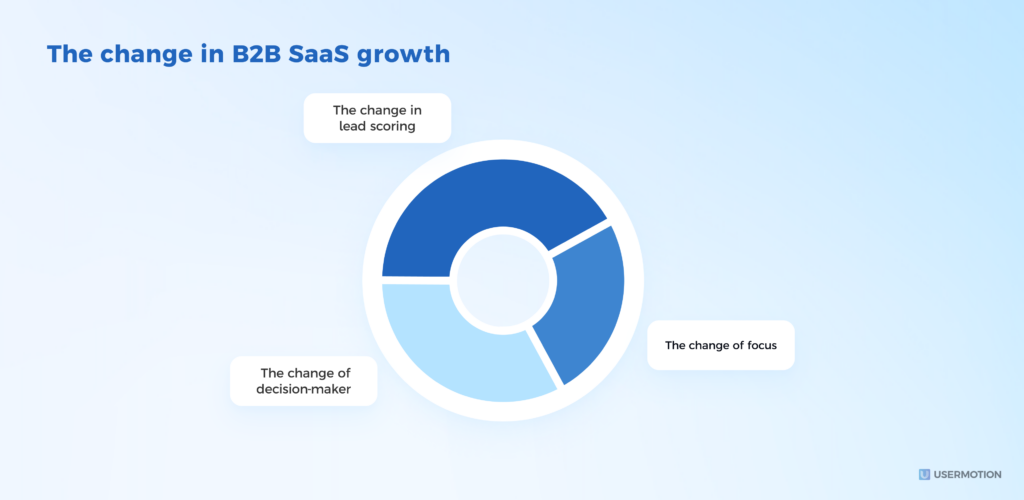
Business-to-business (B2B) SaaS growth is speeding up, especially in bottom-up, product-led plans. Companies like Miro, SurveyMonkey, and Amplitude show this change.
What is the bottom-up approach?
The bottom-up approach is primarily about acquisition and monetization strategies, by using product usage to generate leads. And, transitioning to a product-led approach is where the product starts generating leads.
In the past, SaaS businesses created products based on enterprise checklists. Now, people are making solutions that not only solve problems for the company but also make the user experience better.
The change of decision-maker
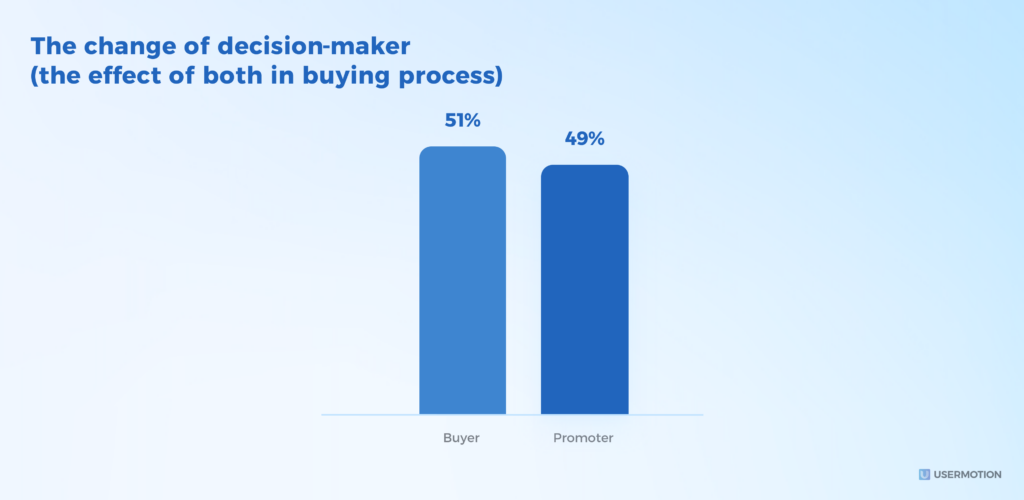
Another important change in B2B SaaS is how we identify the decision-maker. The power of decision-making is now not only on founders but also on the actual users of the product. We often identify them as “promoters.”
These individuals now play a real role in choosing the products and solutions they use. The redefinition of who the “customer” is in B2B contexts has been pivotal. Once the customer was considered the enterprise buyer, it’s now the end user.
This shift is important for all aspects of product development, from onboarding to activation experiences and beyond. It emphasizes the importance of building products that resonate with users, encouraging commitment.
The change in the end-user behaviours
Just like the decision-maker process has changed, end users’ main activities and behaviors have changed a lot too. In SaaS, especially in B2B SaaS, teams can now adopt solutions better because they are more connected in creating strategies and workflows.
The evolution of collaborative tools and platforms, which promote easy communication and integration across different departments, has mainly driven this shift.
In the modern workplace, cross-functional teams with members from various departments increasingly come together to work on projects.
Moreover, there is a growing focus on user experience and personalization in B2B SaaS products. End users now expect to understand a product without needing a demo. This change has also changed traditional customer behaviors, which used to rely heavily on a series of meetings for demos, support, and technical assistance.
The change in lead scoring
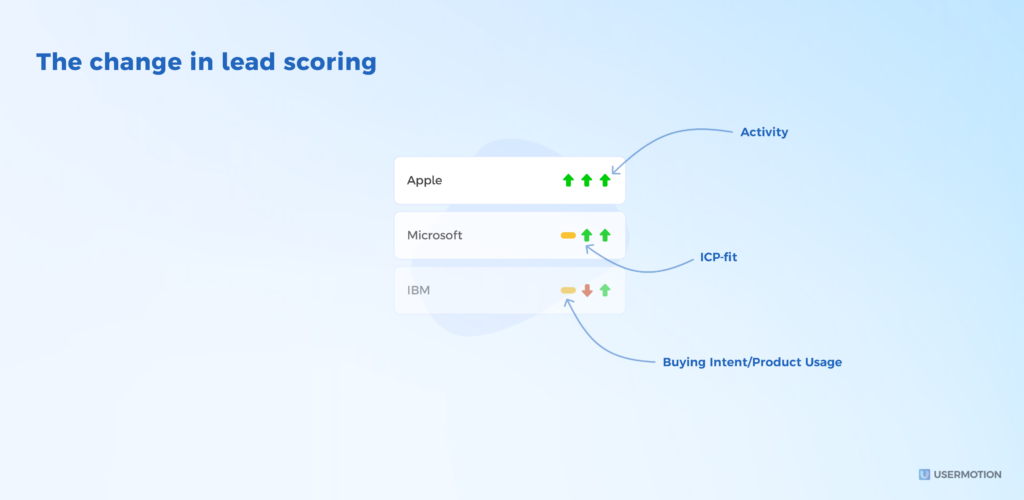
This topic is also highly connected to the role of predictive lead scoring in lead qualification, but this is the case in another article. You can read my article, “Predictive Lead Scoring is the Future of Lead Prioritization” to learn more about it.
But to mention shortly, SaaS companies value customer usage, advanced ICP-fit, and product data more than ever. I couldn’t be able to get answers 4 years ago when I asked “What are the key events in your product that a user MUST complete to be identified as “likely to buy.” But now, businesses have more than one key event, for different segments and even in different scenarios.
Because, they cannot waste time on leads that aren’t likely to turn into sales, and they also can’t afford to miss out on high-potential leads.
So, the change happens as SaaS teams look for solutions that provide customer-product analytics to identify high-potential leads, rather than sales and meeting notes.
What is the future of product-led growth?
We all know that product-led growth is an approach that answers all questions about acquiring, retaining, and monetizing customers. This strategy is changing how companies traditionally find and keep customers, by using the product itself to create interest and drive sales.
Layering sales-led and product-led
For companies that offer SaaS, success means combining product-led methods with traditional sales techniques, AKA, sales-led. The key is to use both together, making sure that one doesn’t overpower the other.
Sales-assist
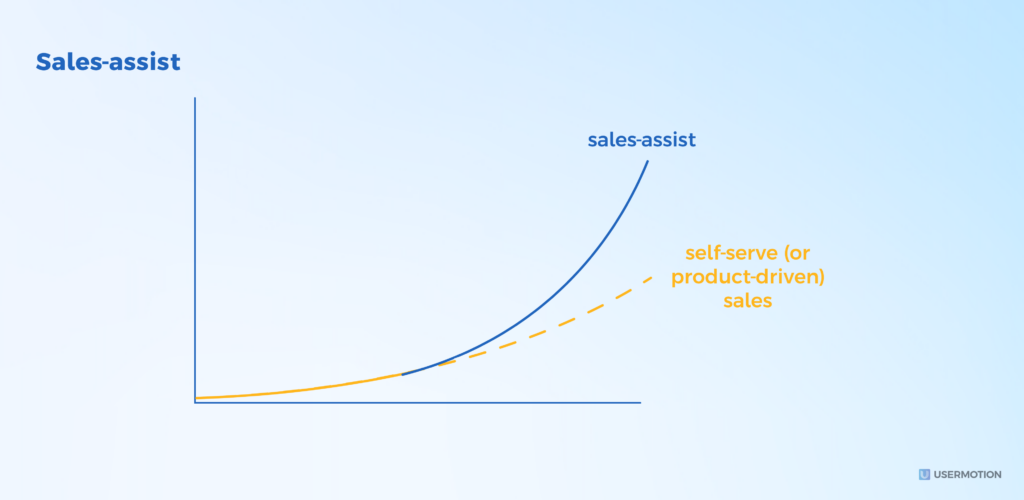
If you ask me, a little bit contrary to the above, even if product-led is placed on the top, sales-assist will continue playing an important role. I mean, maybe product-led overpower sales-led, but it should still hold the power.
We can create great product experiences and rely on product-led sales strategies, but, at some point, sales touch fasten or better the deal processes. How? When sales collect enough data about the lead account (product usage data, key events, customer product fit, etc.), they become more powerful.
Personalization
The future of product-led growth will rely more on personalizing the user experience. Companies will use advanced tools like data analytics, machine learning, and predictive lead scoring to better understand each customer’s behavior.
This deep understanding will help companies offer more custom experiences, leading to stronger customer loyalty and ongoing business.
Getting customer signals
PLG enables – if a company is using an advanced product and customer analytics to analyze activities and behaviors – identifying real customer signals about if they might churn or upgrade.
These insights reveal a lot about the customer’s position and engagement with the product. By identifying such signals early, companies can prevent users from churning, or support them to upgrading.
What can go wrong with PLG and what it can do for scaling up
Scaling up can be difficult for many product-driven businesses, especially when they start to focus on larger enterprise contracts.
This change can accidentally make people forget about product-led strategies, which are what made them successful in the first place. Companies need to remember where they came from in PLG and change their plans to keep moving forward.
How product-led are you?
If your product somehow fits into some or most of these, I understand that you are product-led somewhere from your heart. If there is no fit, then you should consider changing some things in 2024 for the future of product-led growth (if you want to be product-led).
- You have a product built for the end user
- Your product is built to be discovered easily
- Your product is open and flexible
- Your tool gives product value instantly
- Your product has a good customer experience
- Your product gives value first, and then you can monetize
- Your product relies on product usage analytics in sales, marketing, and GTM
- Your product has definite key events that a user must complete to be qualified as a product-qualified lead
- You have a competitive community
The future of product-led growth
As we look toward the future of SaaS, it’s clear that product-led growth is not just a trend but a fundamental shift in how products are developed, marketed, and sold.
It requires a deep understanding of user needs and a commitment to creating products that are not just functional but also engaging.
As we plan for the future, embracing product-led growth is not just advisable; it’s essential for the sustained success of any SaaS.
PS. You can also watch Lenny’s interview with Elena Verna about why product-led growth is the future.
Frequently asked questions
What is product-led growth for SaaS companies?
SaaS companies are already somehow product-led by their nature; but, a product-led growth strategy and mindset is a way to organize your entire team and operations based on the rules of product-led – like acquiring, retaining, and monetizing customers through the powers of the product.
Why product-led growth is the future of SaaS?
Because SaaS growth is really changing. It relies more on self-service experiences, in-app scenarios, and product-customer analytics than ever. Because, the end-user behaviors and needs have changed, too. So, this change in SaaS growth changes the strategies of startups to promote, sell, and run products.

